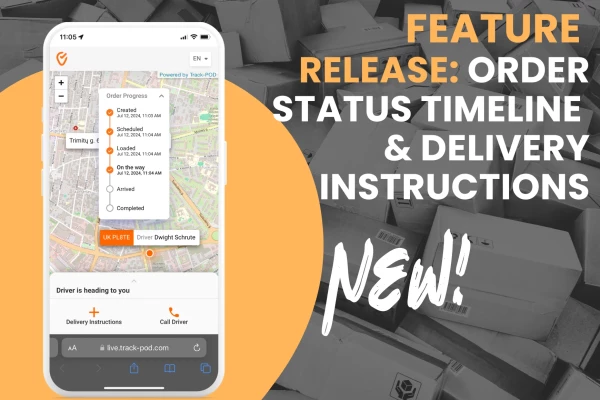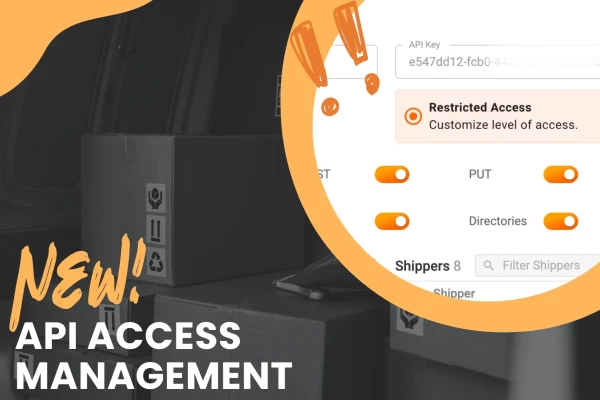What You Can Do to Fight Returns & Offer Great Customer Experience

by
Jake Rheude
July 05, 2022
In this post, guest writer Jake Rheude shares tips on preventing returns as an eCommerce merchant.
Returns can be a total pain. It means you lose time and money (and energy) - and they can also make it much harder for you to stay so positive that you continue giving your customers a top-notch experience.
The issue is that, as beneficial as online shopping has been for merchants who have risen through the eCommerce industry over the last few years, online returns are much more prevalent than brick and mortar returns.
Statistics show that customers return around 30% of all products ordered online, which compares unfavorably with the 8.89% returned to brick and mortar stores.
The good news is that you can turn this around. By offering an excellent customer experience and making a few tweaks to your processes, you can reduce returns and continue giving your customers a reason to shop with you. Let’s take a look at how to do this.
Optimize your product pages
One of the best (and easiest) ways to fight returns is to optimize your product pages so that your customers know exactly what they’re getting. An optimized product page helps to convert site visitors into paying customers, but it also helps to reduce returns.
How so?
When you optimize your product pages, you’re representing your items accurately.
This means the chances of a customer receiving something they weren’t expecting is greatly reduced. As a result, customer satisfaction increases - and returns decrease.
Here are a few things to focus on when optimizing your product pages.
-
Images - Always use high-quality images to showcase your products. Take pictures from multiple angles and - if you’re selling items in different colors - take pictures of the same item in various colors so that your customers know exactly what it looks like.
-
Descriptions - Include details about your product’s materials, size, and dimensions, plus any relevant care and maintenance instructions.
- Videos - Videos of your products not only improve conversions but also ensure the customer gets a better idea of what they’re buying. If you can add how-to videos or short ones that flaunt your products, the customer will almost feel like they’re in a store checking out a product.
- Live stream - live streaming is a great way to showcase your products in real-time. Live stream - live streaming is a great way to showcase your products in real-time. You can use live streaming platforms like VEED to live stream product demonstrations, unboxing videos, or even live Q&As with customers.
Improve your packaging
One of the primary reasons customers send items back is because they arrived damaged.
Typically, a merchant is legally obligated to return an item and issue a refund if an item has been damaged - as stipulated in the return policy. Fortunately, improving your packaging can circumvent this issue and prevent more returns.
-
Always use the right size. If a package is far too big for the item, it could cause it to get damaged during transportation.
-
Add cushioning to protect your items.
-
Check packages to confirm loading and look for damage before shipping.
-
Test and track the parcels you send. Ask for feedback, send items to your locations or homes, and review how well current packaging performs in transit.
You should also exert quality control to ensure each package is correctly sealed before it’s sent out.
Prioritize shipping speed and delivery performance
Late deliveries negatively affect your customer retention rate and can increase your returns. When deliveries are frequently late, more of your customers will leave negative online reviews, harming your brand perception and reputation.
Worse still, 25% of customers have said that they will cancel an order if it’s taking too long to arrive.
With more delivery options open to your customers than ever, you must get this right. Fortunately, there are a number of easy ways you can improve your shipping times.
Work with a 3PL
A 3PL takes care of a large part of your logistics for you. They help with outsourcing inventory management, warehousing automation - and deliveries. In a nutshell, they ensure that your products are packaged, shipped, and delivered on time, thus helping you manage customer expectations better.
Use delayed notifications
A delayed notification is a type of delivery notifications that lets your customers know if their package will be a little late. After all, customers know that stalled shipments happen now and again. You’re keeping them in the loop with a “your delivery is delayed” notification.
Use inventory management software
Inventory management software, especially AI-driven software, helps you stay on top of your orders and sales channels. You can use it to make more accurate forecasts, prevent overstocks or under stocks, and save time by automating inventory management.
Inventory management can also help with quality control to manage the risk of returns.
Secure more customer reviews
As many as 10% of your customers will leave a review.
Making sure you deliver your products on time and preventing your items from getting damaged (see above) will help minimize the negative reviews you receive, ensuring you receive more positive ones.
Why does this matter in the fight against returns?
Statistics show that almost 79% of shoppers trust customer reviews as much as recommendations made by someone they know.
Customer reviews help shape how your customers perceive your brand, build trust, and are often more helpful than a product description.
All of this goes a long way towards reducing the likelihood of returns: you’ll find that customers often do a good job of describing your product, including what they liked about it and what other people might like about it, too. This ensures that other customers who read them will buy products they’ll enjoy and not return.
Here are some ways you can encourage more customer reviews.
-
Show your customers where they can leave a review. Perhaps you could send them an email a few days after they've received their item and politely ask if they’d like to leave a review.
-
Publish more reviews on your homepage. The more reviews you have that are clearly visible to your customers, the more likely it is that others will be encouraged to leave a review.
-
Incentivize your customers. Sometimes, a customer might need an incentive to leave a review. If so, you can offer small discounts or gift cards to anyone who leaves one.
Improve your customer experience
A great customer experience remains the best way to build lasting relationships with your customers built on confidence and trust.
A good customer experience is everything. It enhances your brand perception, ensures the customer gets what they want, hassle-free, and improves customer retention, customer satisfaction, and lifetime value.
And when customers turn into loyal customers, returns rates drop.
There are a number of ways you can improve the customer experience.
Offer excellent customer service
This can mean adding chatbots to your website so that you’re “always on,” personalizing your customer service to make each customer feel valued, and leveraging feedback so that you know more about what your customers want.
Encourage making more user-generated content
User-generated content is content created by your customers that you then add to - among other channels - your social media platforms. It’s a fantastic form of social proof and can create a community vibe around your brand where everyone feels welcome.
Implement loyalty programs
Loyalty programs reward repeat customers with perks such as discounts and free shipping. They enhance your relationships with your customers and go a long way to boosting customer retention (thus reducing returns).
Final thoughts
Reducing returns improves your bottom line. All the methods we’ve discussed above will help you to increase your brand reputation and create more satisfied customers.
A lot of the time, it’s just a case of putting the customer and their needs first. Once you start prioritizing this, not only will you see a reduction in returns, but you may also see that customer loyalty and your customer lifetime values improve.
About The Author
Jake Rheude
Jake Rheude is the Vice President of Marketing for Red Stag Fulfillment, an ecommerce fulfillment warehouse that was born out of ecommerce. He has years of experience in ecommerce and business development.





